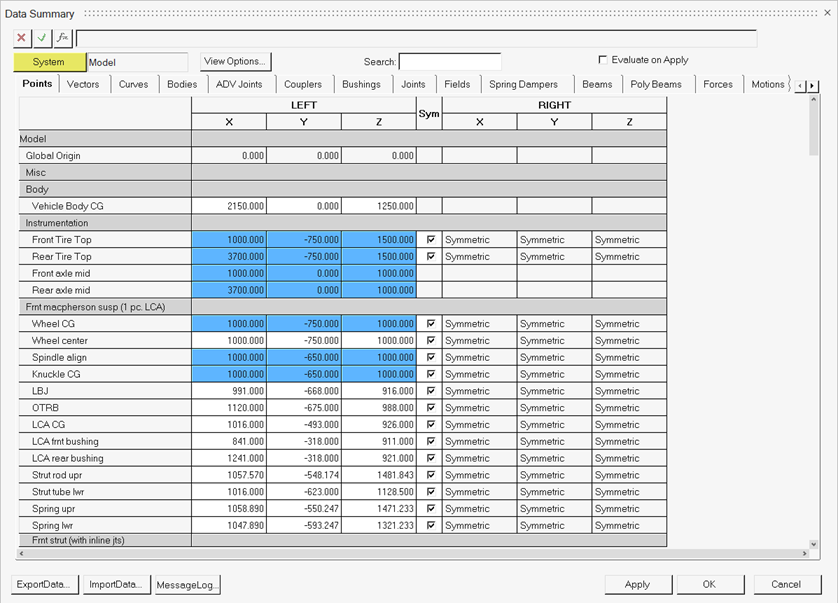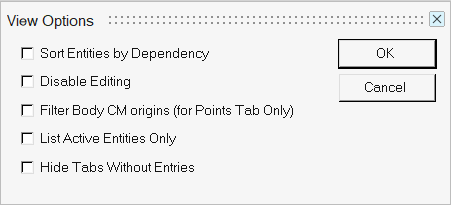Data Summary
The Data Summary dialog displays model data in a table that can be edited.

A Search field is available to filter entries based on the input string. Multiple comma separated search strings can be provided that works similar to ‘OR’ condition.
Select the Evaluate on Apply option to suspend the evaluation of the model until Apply is clicked. This is useful for very large models that take significant time for model evaluation that generally happens for every data field edit.
The data an be exported by clicking Export Data. The data can be exported as an Excel file or a text file.
The message log appears in the bottom half of the window and gives you information about your file. To display a data log, click Message Log (the button will remain in a depressed state). To clear the message log, click Clear. To remove the display of the data log, click the Message Log button again.
View Options
The View Options button on the Data Summary dialog provides additional controls to display the data.

| Sort Entities by Dependency | Groups entities based on dependency. Independent entities are listed at the top and entities with parametric relations are listed at the bottom within a system. |
| Filter Body CM origins (for Points Tab Only) | Filter Points that are used as Body CG. |
| List Active Entities Only | Show entities that are active only. |
| Hide Tabs Without Entries | Hide entity tabs that do not have any entries. |
Export Data From the Data Summary Dialog
-
From right side of select entity panels, click Data
Summary.
The Data Summary dialog is displayed.
- Click ExportData.
- From the Save as Type drop-down menu, select a file type.
-
Under Select Data, select the data types you want to export with your
file.
Select All to save all entity types or None to clear all selections.
-
Select Wrapped or Unwrapped from
the Format Data drop-down menu.
Note: This option is not available for Excel files.
- Click Export.
- From the Save As dialog, select a directory.
- Enter a name in the File name text field.
-
Click Save.
The data is exported.
Import Data to the Data Summary Dialog
-
From the Data Summary dialog, click
ImportData.
The Open dialog is displayed.
- Browse to the desired directory.
-
Select an Excel file and click Open.
The data is imported.